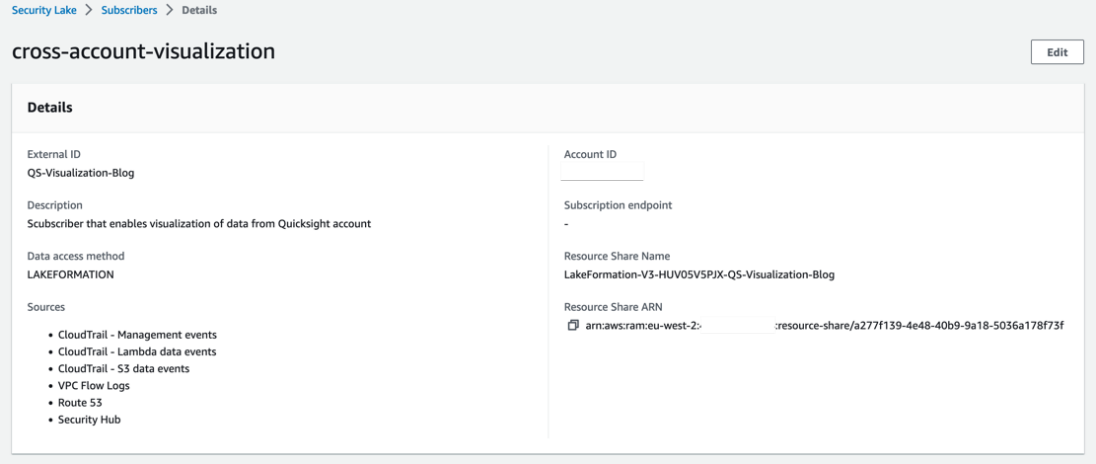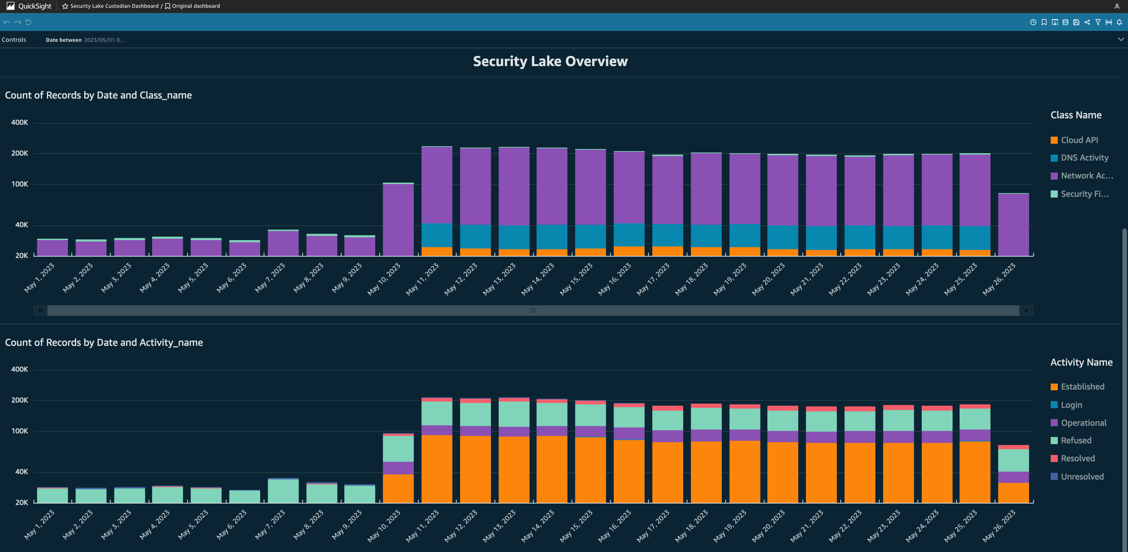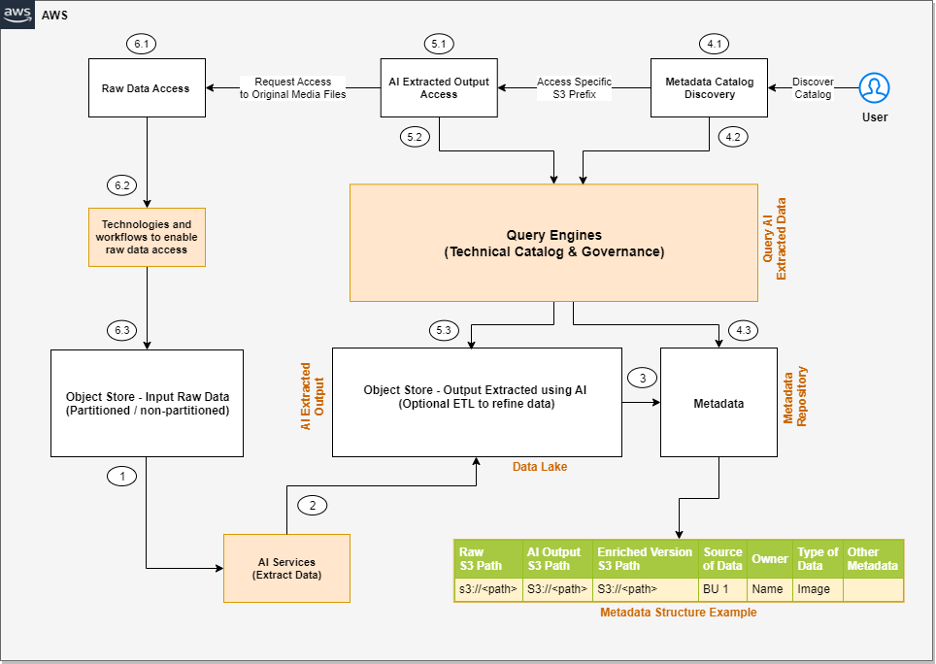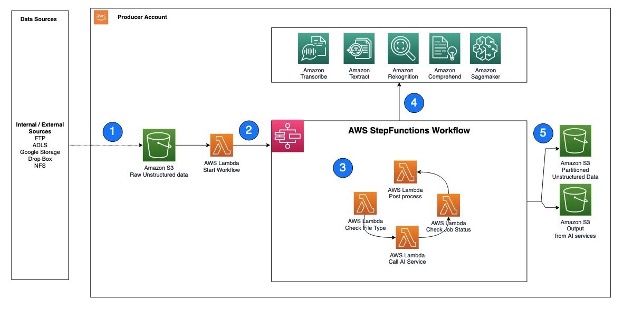Post Syndicated from Jeeshan Khetrapal original https://aws.amazon.com/blogs/big-data/how-amazon-optimized-its-high-volume-financial-reconciliation-process-with-amazon-emr-for-higher-scalability-and-performance/
Account reconciliation is an important step to ensure the completeness and accuracy of financial statements. Specifically, companies must reconcile balance sheet accounts that could contain significant or material misstatements. Accountants go through each account in the general ledger of accounts and verify that the balance listed is complete and accurate. When discrepancies are found, accountants investigate and take appropriate corrective action.
As part of Amazon’s FinTech organization, we offer a software platform that empowers the internal accounting teams at Amazon to conduct account reconciliations. To optimize the reconciliation process, these users require high performance transformation with the ability to scale on demand, as well as the ability to process variable file sizes ranging from as low as a few MBs to more than 100 GB. It’s not always possible to fit data onto a single machine or process it with one single program in a reasonable time frame. This computation has to be done fast enough to provide practical services where programming logic and underlying details (data distribution, fault tolerance, and scheduling) can be separated.
We can achieve these simultaneous computations on multiple machines or threads of the same function across groups of elements of a dataset by using distributed data processing solutions. This encouraged us to reinvent our reconciliation service powered by AWS services, including Amazon EMR and the Apache Spark distributed processing framework, which uses PySpark. This service enables users to process files over 100 GB containing up to 100 million transactions in less than 30 minutes. The reconciliation service has become a powerhouse for data processing, and now users can seamlessly perform a variety of operations, such as Pivot, JOIN (like an Excel VLOOKUP operation), arithmetic operations, and more, providing a versatile and efficient solution for reconciling vast datasets. This enhancement is a testament to the scalability and speed achieved through the adoption of distributed data processing solutions.
In this post, we explain how we integrated Amazon EMR to build a highly available and scalable system that enabled us to run a high-volume financial reconciliation process.
Architecture before migration
The following diagram illustrates our previous architecture.

Our legacy service was built with Amazon Elastic Container Service (Amazon ECS) on AWS Fargate. We processed the data sequentially using Python. However, due to its lack of parallel processing capability, we frequently had to increase the cluster size vertically to support larger datasets. For context, 5 GB of data with 50 operations took around 3 hours to process. This service was configured to scale horizontally to five ECS instances that polled messages from Amazon Simple Queue Service (Amazon SQS), which fed the transformation requests. Each instance was configured with 4 vCPUs and 30 GB of memory to allow horizontal scaling. However, we couldn’t expand its capacity on performance because the process happened sequentially, picking chunks of data from Amazon Simple Storage Service (Amazon S3) for processing. For example, a VLOOKUP operation where two files are to be joined required both files to be read in memory chunk by chunk to obtain the output. This became an obstacle for users because they had to wait for long periods of time to process their datasets.
As part of our re-architecture and modernization, we wanted to achieve the following:
- High availability – The data processing clusters should be highly available, providing three 9s of availability (99.9%)
- Throughput – The service should handle 1,500 runs per day
- Latency – It should be able to process 100 GB of data within 30 minutes
- Heterogeneity – The cluster should be able to support a wide variety of workloads, with files ranging from a few MBs to hundreds of GBs
- Query concurrency – The implementation demands the ability to support a minimum of 10 degrees of concurrency
- Reliability of jobs and data consistency – Jobs need to run reliably and consistently to avoid breaking Service Level Agreements (SLAs)
- Cost-effective and scalable – It must be scalable based on the workload, making it cost-effective
- Security and compliance – Given the sensitivity of data, it must support fine-grained access control and appropriate security implementations
- Monitoring – The solution must offer end-to-end monitoring of the clusters and jobs
Why Amazon EMR
Amazon EMR is the industry-leading cloud big data solution for petabyte-scale data processing, interactive analytics, and machine learning (ML) using open source frameworks such as Apache Spark, Apache Hive, and Presto. With these frameworks and related open-source projects, you can process data for analytics purposes and BI workloads. Amazon EMR lets you transform and move large amounts of data in and out of other AWS data stores and databases, such as Amazon S3 and Amazon DynamoDB.
A notable advantage of Amazon EMR lies in its effective use of parallel processing with PySpark, marking a significant improvement over traditional sequential Python code. This innovative approach streamlines the deployment and scaling of Apache Spark clusters, allowing for efficient parallelization on large datasets. The distributed computing infrastructure not only enhances performance, but also enables the processing of vast amounts of data at unprecedented speeds. Equipped with libraries, PySpark facilitates Excel-like operations on DataFrames, and the higher-level abstraction of DataFrames simplifies intricate data manipulations, reducing code complexity. Combined with automatic cluster provisioning, dynamic resource allocation, and integration with other AWS services, Amazon EMR proves to be a versatile solution suitable for diverse workloads, ranging from batch processing to ML. The inherent fault tolerance in PySpark and Amazon EMR promotes robustness, even in the event of node failures, making it a scalable, cost-effective, and high-performance choice for parallel data processing on AWS.
Amazon EMR extends its capabilities beyond the basics, offering a variety of deployment options to cater to diverse needs. Whether it’s Amazon EMR on EC2, Amazon EMR on EKS, Amazon EMR Serverless, or Amazon EMR on AWS Outposts, you can tailor your approach to specific requirements. For those seeking a serverless environment for Spark jobs, integrating AWS Glue is also a viable option. In addition to supporting various open-source frameworks, including Spark, Amazon EMR provides flexibility in choosing deployment modes, Amazon Elastic Compute Cloud (Amazon EC2) instance types, scaling mechanisms, and numerous cost-saving optimization techniques.
Amazon EMR stands as a dynamic force in the cloud, delivering unmatched capabilities for organizations seeking robust big data solutions. Its seamless integration, powerful features, and adaptability make it an indispensable tool for navigating the complexities of data analytics and ML on AWS.
Redesigned architecture
The following diagram illustrates our redesigned architecture.

The solution operates under an API contract, where clients can submit transformation configurations, defining the set of operations alongside the S3 dataset location for processing. The request is queued through Amazon SQS, then directed to Amazon EMR via a Lambda function. This process initiates the creation of an Amazon EMR step for Spark framework implementation on a dedicated EMR cluster. Although Amazon EMR accommodates an unlimited number of steps over a long-running cluster’s lifetime, only 256 steps can be running or pending simultaneously. For optimal parallelization, the step concurrency is set at 10, allowing 10 steps to run concurrently. In case of request failures, the Amazon SQS dead-letter queue (DLQ) retains the event. Spark processes the request, translating Excel-like operations into PySpark code for an efficient query plan. Resilient DataFrames store input, output, and intermediate data in-memory, optimizing processing speed, reducing disk I/O cost, enhancing workload performance, and delivering the final output to the specified Amazon S3 location.
We define our SLA in two dimensions: latency and throughput. Latency is defined as the amount of time taken to perform one job against a deterministic dataset size and the number of operations performed on the dataset. Throughput is defined as the maximum number of simultaneous jobs the service can perform without breaching the latency SLA of one job. The overall scalability SLA of the service depends on the balance of horizontal scaling of elastic compute resources and vertical scaling of individual servers.
Because we had to run 1,500 processes per day with minimal latency and high performance, we choose to integrate Amazon EMR on EC2 deployment mode with managed scaling enabled to support processing variable file sizes.
The EMR cluster configuration provides many different selections:
- EMR node types – Primary, core, or task nodes
- Instance purchasing options – On-Demand Instances, Reserved Instances, or Spot Instances
- Configuration options – EMR instance fleet or uniform instance group
- Scaling options – Auto Scaling or Amazon EMR managed scaling
Based on our variable workload, we configured an EMR instance fleet (for best practices, see Reliability). We also decided to use Amazon EMR managed scaling to scale the core and task nodes (for scaling scenarios, refer to Node allocation scenarios). Lastly, we chose memory-optimized AWS Graviton instances, which provide up to 30% lower cost and up to 15% improved performance for Spark workloads.
The following code provides a snapshot of our cluster configuration:
Performance
With our migration to Amazon EMR, we were able to achieve a system performance capable of handling a variety of datasets, ranging from as low as 273 B to as high as 88.5 GB with a p99 of 491 seconds (approximately 8 minutes).
The following figure illustrates the variety of file sizes processed.

The following figure shows our latency.

To compare against sequential processing, we took two datasets containing 53 million records and ran a VLOOKUP operation against each other, along with 49 other Excel-like operations. This took 26 minutes to process in the new service, compared to 5 days to process in the legacy service. This improvement is almost 300 times greater over the previous architecture in terms of performance.

Considerations
Keep in mind the following when considering this solution:
- Right-sizing clusters – Although Amazon EMR is resizable, it’s important to right-size the clusters. Right-sizing mitigates a slow cluster, if undersized, or higher costs, if the cluster is oversized. To anticipate these issues, you can calculate the number and type of nodes that will be needed for the workloads.
- Parallel steps – Running steps in parallel allows you to run more advanced workloads, increase cluster resource utilization, and reduce the amount of time taken to complete your workload. The number of steps allowed to run at one time is configurable and can be set when a cluster is launched and any time after the cluster has started. You need to consider and optimize the CPU/memory usage per job when multiple jobs are running in a single shared cluster.
- Job-based transient EMR clusters – If applicable, it is recommended to use a job-based transient EMR cluster, which delivers superior isolation, verifying that each task operates within its dedicated environment. This approach optimizes resource utilization, helps prevent interference between jobs, and enhances overall performance and reliability. The transient nature enables efficient scaling, providing a robust and isolated solution for diverse data processing needs.
- EMR Serverless – EMR Serverless is the ideal choice if you prefer not to handle the management and operation of clusters. It allows you to effortlessly run applications using open-source frameworks available within EMR Serverless, offering a straightforward and hassle-free experience.
- Amazon EMR on EKS – Amazon EMR on EKS offers distinct advantages, such as faster startup times and improved scalability resolving compute capacity challenges—which is particularly beneficial for Graviton and Spot Instance users. The inclusion of a broader range of compute types enhances cost-efficiency, allowing tailored resource allocation. Furthermore, Multi-AZ support provides increased availability. These compelling features provide a robust solution for managing big data workloads with improved performance, cost optimization, and reliability across various computing scenarios.
Conclusion
In this post, we explained how Amazon optimized its high-volume financial reconciliation process with Amazon EMR for higher scalability and performance. If you have a monolithic application that’s dependent on vertical scaling to process additional requests or datasets, then migrating it to a distributed processing framework such as Apache Spark and choosing a managed service such as Amazon EMR for compute may help reduce the runtime to lower your delivery SLA, and also may help reduce the Total Cost of Ownership (TCO).
As we embrace Amazon EMR for this particular use case, we encourage you to explore further possibilities in your data innovation journey. Consider evaluating AWS Glue, along with other dynamic Amazon EMR deployment options such as EMR Serverless or Amazon EMR on EKS, to discover the best AWS service tailored to your unique use case. The future of the data innovation journey holds exciting possibilities and advancements to be explored further.
About the Authors
 Jeeshan Khetrapal is a Sr. Software Development Engineer at Amazon, where he develops fintech products based on cloud computing serverless architectures that are responsible for companies’ IT general controls, financial reporting, and controllership for governance, risk, and compliance.
Jeeshan Khetrapal is a Sr. Software Development Engineer at Amazon, where he develops fintech products based on cloud computing serverless architectures that are responsible for companies’ IT general controls, financial reporting, and controllership for governance, risk, and compliance.
 Sakti Mishra is a Principal Solutions Architect at AWS, where he helps customers modernize their data architecture and define their end-to-end data strategy, including data security, accessibility, governance, and more. He is also the author of the book Simplify Big Data Analytics with Amazon EMR. Outside of work, Sakti enjoys learning new technologies, watching movies, and visiting places with family.
Sakti Mishra is a Principal Solutions Architect at AWS, where he helps customers modernize their data architecture and define their end-to-end data strategy, including data security, accessibility, governance, and more. He is also the author of the book Simplify Big Data Analytics with Amazon EMR. Outside of work, Sakti enjoys learning new technologies, watching movies, and visiting places with family.
















 Satesh Sonti is a Sr. Analytics Specialist Solutions Architect based out of Atlanta, specialized in building enterprise data platforms, data warehousing, and analytics solutions. He has over 18 years of experience in building data assets and leading complex data platform programs for banking and insurance clients across the globe.
Satesh Sonti is a Sr. Analytics Specialist Solutions Architect based out of Atlanta, specialized in building enterprise data platforms, data warehousing, and analytics solutions. He has over 18 years of experience in building data assets and leading complex data platform programs for banking and insurance clients across the globe. Alket Memushaj works as a Principal Architect in the Financial Services Market Development team at AWS. Alket is responsible for technical strategy for capital markets, working with partners and customers to deploy applications across the trade lifecycle to the AWS Cloud, including market connectivity, trading systems, and pre- and post-trade analytics and research platforms.
Alket Memushaj works as a Principal Architect in the Financial Services Market Development team at AWS. Alket is responsible for technical strategy for capital markets, working with partners and customers to deploy applications across the trade lifecycle to the AWS Cloud, including market connectivity, trading systems, and pre- and post-trade analytics and research platforms. Ruben Falk is a Capital Markets Specialist focused on AI and data & analytics. Ruben consults with capital markets participants on modern data architecture and systematic investment processes. He joined AWS from S&P Global Market Intelligence where he was Global Head of Investment Management Solutions.
Ruben Falk is a Capital Markets Specialist focused on AI and data & analytics. Ruben consults with capital markets participants on modern data architecture and systematic investment processes. He joined AWS from S&P Global Market Intelligence where he was Global Head of Investment Management Solutions. Jeff Wilson is a World-wide Go-to-market Specialist with 15 years of experience working with analytic platforms. His current focus is sharing the benefits of using Amazon Redshift, Amazon’s native cloud data warehouse. Jeff is based in Florida and has been with AWS since 2019.
Jeff Wilson is a World-wide Go-to-market Specialist with 15 years of experience working with analytic platforms. His current focus is sharing the benefits of using Amazon Redshift, Amazon’s native cloud data warehouse. Jeff is based in Florida and has been with AWS since 2019.


 Diagram 4: S3 Bucket creation success with hooks execution
Diagram 4: S3 Bucket creation success with hooks execution




 Parnab Basak is a Senior Solutions Architect and a Serverless Specialist at AWS. He specializes in creating new solutions that are cloud native using modern software development practices like serverless, DevOps, and analytics. Parnab works closely in the analytics and integration services space helping customers adopt AWS services for their workflow orchestration needs.
Parnab Basak is a Senior Solutions Architect and a Serverless Specialist at AWS. He specializes in creating new solutions that are cloud native using modern software development practices like serverless, DevOps, and analytics. Parnab works closely in the analytics and integration services space helping customers adopt AWS services for their workflow orchestration needs. Chandan Rupakheti is a Solutions Architect and a Serverless Specialist at AWS. He is a passionate technical leader, researcher, and mentor with a knack for building innovative solutions in the cloud and bringing stakeholders together in their cloud journey. Outside his professional life, he loves spending time with his family and friends besides listening and playing music.
Chandan Rupakheti is a Solutions Architect and a Serverless Specialist at AWS. He is a passionate technical leader, researcher, and mentor with a knack for building innovative solutions in the cloud and bringing stakeholders together in their cloud journey. Outside his professional life, he loves spending time with his family and friends besides listening and playing music. Vinod Jayendra is a Enterprise Support Lead in ISV accounts at Amazon Web Services, where he helps customers in solving their architectural, operational, and cost optimization challenges. With a particular focus on Serverless technologies, he draws from his extensive background in application development to deliver top-tier solutions. Beyond work, he finds joy in quality family time, embarking on biking adventures, and coaching youth sports team.
Vinod Jayendra is a Enterprise Support Lead in ISV accounts at Amazon Web Services, where he helps customers in solving their architectural, operational, and cost optimization challenges. With a particular focus on Serverless technologies, he draws from his extensive background in application development to deliver top-tier solutions. Beyond work, he finds joy in quality family time, embarking on biking adventures, and coaching youth sports team. Rupesh Tiwari is a Senior Solutions Architect at AWS in New York City, with a focus on Financial Services. He has over 18 years of IT experience in the finance, insurance, and education domains, and specializes in architecting large-scale applications and cloud-native big data workloads. In his spare time, Rupesh enjoys singing karaoke, watching comedy TV series, and creating joyful moments with his family.
Rupesh Tiwari is a Senior Solutions Architect at AWS in New York City, with a focus on Financial Services. He has over 18 years of IT experience in the finance, insurance, and education domains, and specializes in architecting large-scale applications and cloud-native big data workloads. In his spare time, Rupesh enjoys singing karaoke, watching comedy TV series, and creating joyful moments with his family.






























 Bhavana Chirumamilla is a Senior Resident Architect at AWS with a strong passion for data and machine learning operations. She brings a wealth of experience and enthusiasm to help enterprises build effective data and ML strategies. In her spare time, Bhavana enjoys spending time with her family and engaging in various activities such as traveling, hiking, gardening, and watching documentaries.
Bhavana Chirumamilla is a Senior Resident Architect at AWS with a strong passion for data and machine learning operations. She brings a wealth of experience and enthusiasm to help enterprises build effective data and ML strategies. In her spare time, Bhavana enjoys spending time with her family and engaging in various activities such as traveling, hiking, gardening, and watching documentaries. Sheela Sonone is a Senior Resident Architect at AWS. She helps AWS customers make informed choices and trade-offs about accelerating their data, analytics, and AI/ML workloads and implementations. In her spare time, she enjoys spending time with her family—usually on tennis courts.
Sheela Sonone is a Senior Resident Architect at AWS. She helps AWS customers make informed choices and trade-offs about accelerating their data, analytics, and AI/ML workloads and implementations. In her spare time, she enjoys spending time with her family—usually on tennis courts. Daniel Bruno is a Principal Resident Architect at AWS. He had been building analytics and machine learning solutions for over 20 years and splits his time helping customers build data science programs and designing impactful ML products.
Daniel Bruno is a Principal Resident Architect at AWS. He had been building analytics and machine learning solutions for over 20 years and splits his time helping customers build data science programs and designing impactful ML products.





































 Shoukat Ghouse is a Senior Big Data Specialist Solutions Architect at AWS. He helps customers around the world build robust, efficient and scalable data platforms on AWS leveraging AWS analytics services like AWS Glue, AWS Lake Formation, Amazon Athena and Amazon EMR.
Shoukat Ghouse is a Senior Big Data Specialist Solutions Architect at AWS. He helps customers around the world build robust, efficient and scalable data platforms on AWS leveraging AWS analytics services like AWS Glue, AWS Lake Formation, Amazon Athena and Amazon EMR.













